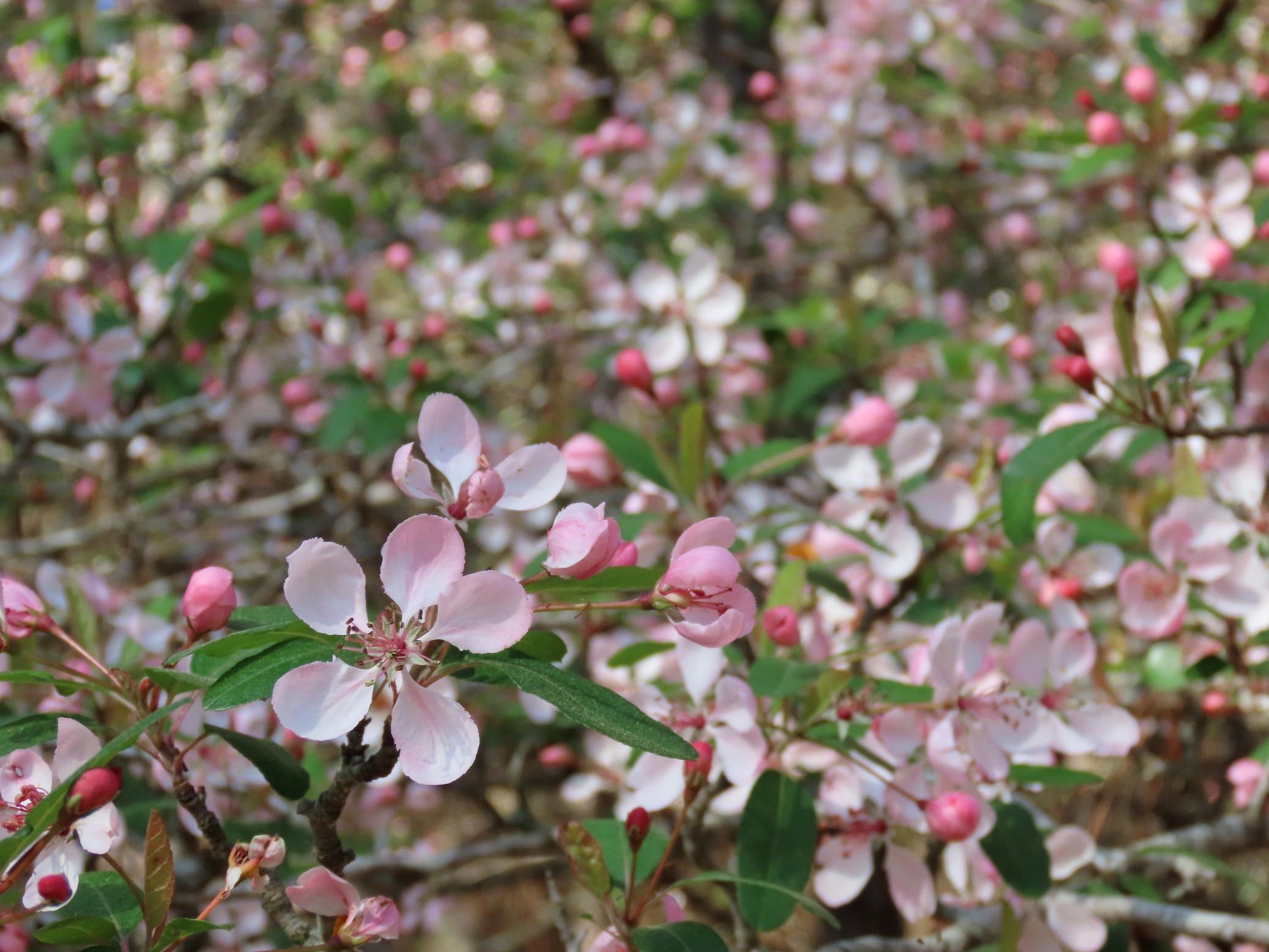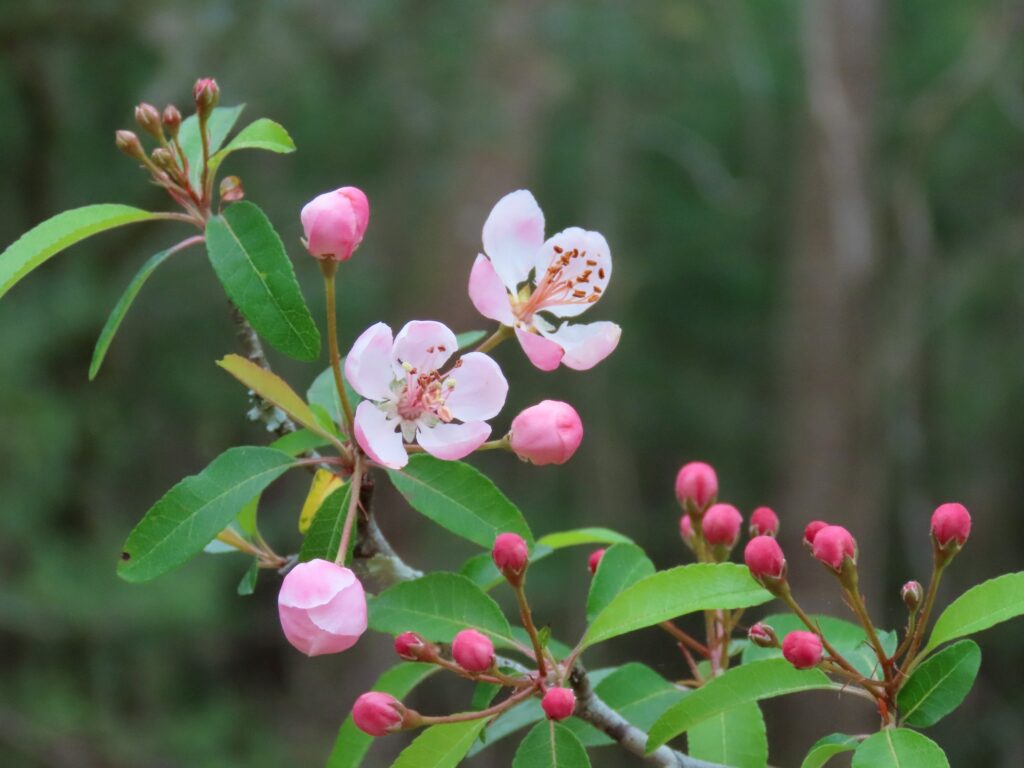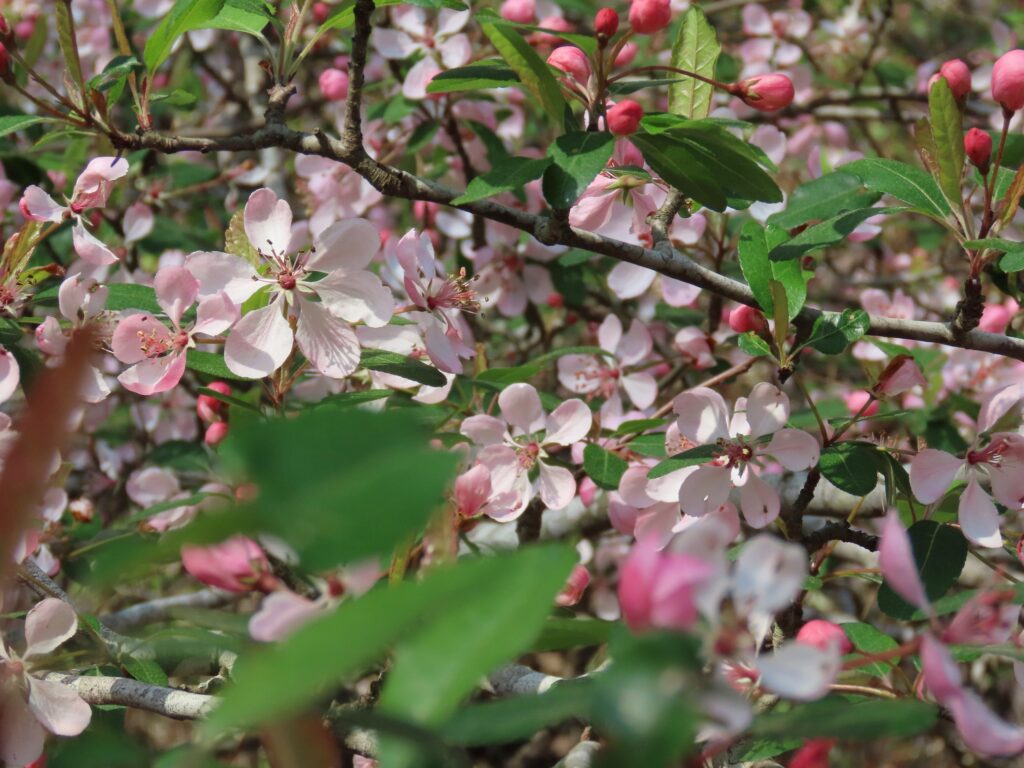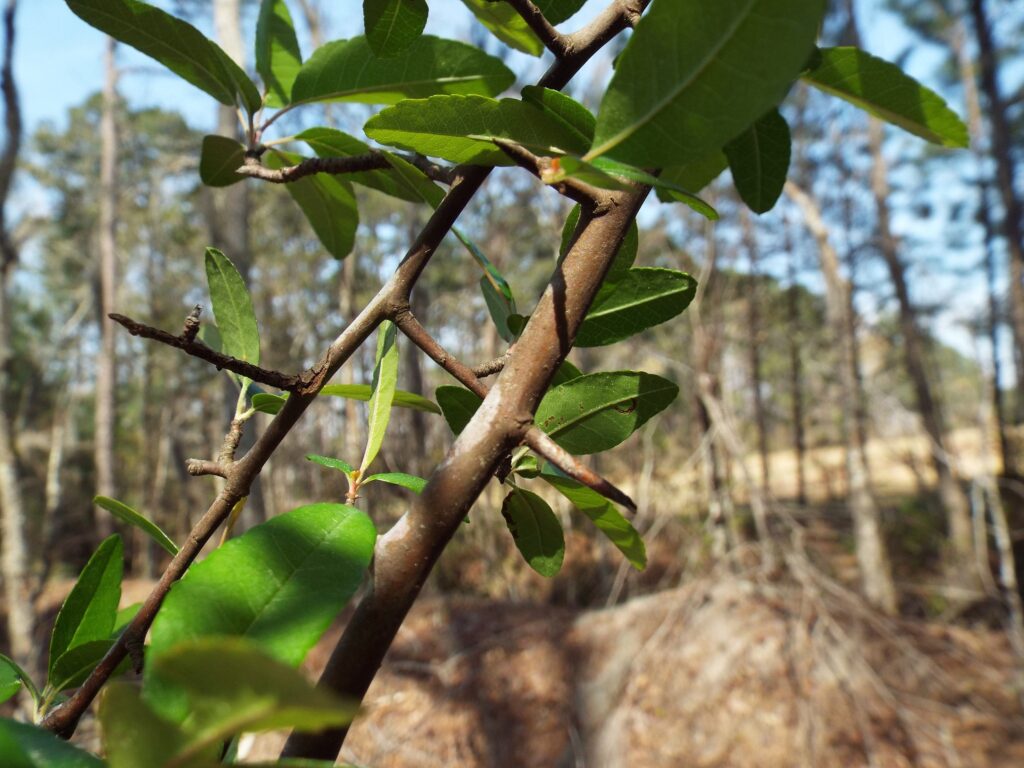




This week for Flora and Fauna Friday we learning about the lesser known cousin of the prototypical fruit tree, Southern Crabapple (Malus angustifolia).
Southern Crabapple is a member of the Apple genus found throughout the Southeastern United States. In South Carolina it’s primarily seen within the coastal plain. It’s a large shrub bordering on small tree that’s partial to moist but well-drained soils along woodland edges and clearings. It will spread by its roots to create loose thickets but primarily disperses through seeds carried away by wildlife. Southern Crabapple has dark scaly bark and a compact growth form with a broad canopy. Its leaves are small, simple, and possess a toothed margin. Its stems occasionally are barbed with thorns. The stems of Southern Crabapple also have a feature called “spur twigs” which are short, thickened twigs growing from the side of the main stem. Spur twigs are an adaptation found mainly in fruit-bearing trees and these stems are where the flowers and fruits of the plant primarily emerge from. These spur twigs only grow a few fractions of an inch each year and, by staying short and thick, they keep the fruits close to the main vegetative stem. This lowers the overall weight of the limb and reduce strain on the limbs from wind. Thus helping prevent limb breakages when the plant is laden with fruit.
The easiest time to find a Southern Crabapple tree is in early spring, usually the latter half of March, when they let loose their buds and produce a profusion of flowers. The entire tree becomes smothered by a blanket of pale-pink petals. There are few other native trees that are as prolific a bloomer as Southern Crabapple. Like many fruit trees, these flowers rely on bees and other native pollinators to set fruit. The fruit of the Crabapple, as well as regular Apples, is a pome, a soft, fleshy fruit with several seeds tucked into its center. The fruits of Southern Crabapple are small, at about an inch across. They’re also hard and practically inedible for humans. However, the fruits can be cooked down to make preserves or fermented to make ciders. Additionally, these fruits are cherished by wildlife including deer, raccoons, foxes, turkeys, orioles, and mockingbirds. Southern Crabapple is commonly planted in food plots as means of attracting wildlife. There are many cultivars that have been developed for this native shrub in order to boost the value of its fruit for both wildlife and human consumption as well as to make it hardier or more ornamentally attractive.